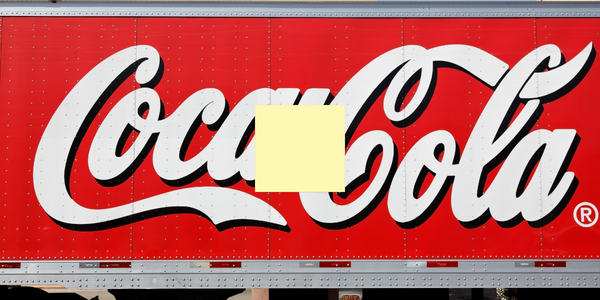Download PDF
Case Study: Food & Beverage
Technology Category
- Functional Applications - Warehouse Management Systems (WMS)
Applicable Industries
- Food & Beverage
Applicable Functions
- Warehouse & Inventory Management
- Logistics & Transportation
Use Cases
- Inventory Management
- Supply Chain Visibility
- Track & Trace of Assets
- Warehouse Automation
Services
- System Integration
- Training
The Challenge
Dietz & Watson faced significant challenges in managing their growing distribution needs. Their existing home-grown system was outdated and inefficient, leading to a lack of storage space and operational inefficiencies. The company needed a strategic implementation plan that would minimize operational impact while providing a high level of service to their customers. They required a solution that could handle various temperature-controlled areas and manage multiple product lines effectively. Additionally, they needed to ensure zero downtime during the implementation process to avoid disrupting their daily operations.
About The Customer
Dietz & Watson is a renowned company in the food and beverage industry, known for its high-quality deli meats and artisan cheeses. Founded in 1939 by Gottlieb Dietz, the company has maintained a commitment to 'quality above all,' using only the freshest lean meats and finest all-natural spices and seasonings. Today, the third generation of the Dietz family continues this legacy, focusing on preparing and distributing premium products. The company partnered with Black Bear Distribution, a third-party logistics provider, to address their growing distribution needs and implement a world-class technology solution.
The Solution
Dietz & Watson partnered with Softeon to implement their supply chain execution (SCE) solutions. The phased implementation approach allowed them to minimize operational impact by rolling out one product line at a time over four months. Softeon's experienced team ensured zero downtime during the transition. The solution included advanced receiving, rule-based putaway, advanced wave management, optimized pick path sequencing, real-time replenishment, and shipping, providing full control and visibility at every process stage. The system also offered 100% serialization down to the case, complete tracking and trace functionality, and the ability to capture catch weights for order and billing accuracy. Special requirements like 'sale by dates' and recall functionalities were handled automatically.
Operational Impact
Quantitative Benefit
Related Case Studies.

Case Study
The Kellogg Company
Kellogg keeps a close eye on its trade spend, analyzing large volumes of data and running complex simulations to predict which promotional activities will be the most effective. Kellogg needed to decrease the trade spend but its traditional relational database on premises could not keep up with the pace of demand.

Case Study
HEINEKEN Uses the Cloud to Reach 10.5 Million Consumers
For 2012 campaign, the Bond promotion, it planned to launch the campaign at the same time everywhere on the planet. That created unprecedented challenges for HEINEKEN—nowhere more so than in its technology operation. The primary digital content for the campaign was a 100-megabyte movie that had to play flawlessly for millions of viewers worldwide. After all, Bond never fails. No one was going to tolerate a technology failure that might bruise his brand.Previously, HEINEKEN had supported digital media at its outsourced datacenter. But that datacenter lacked the computing resources HEINEKEN needed, and building them—especially to support peak traffic that would total millions of simultaneous hits—would have been both time-consuming and expensive. Nor would it have provided the geographic reach that HEINEKEN needed to minimize latency worldwide.

Case Study
Energy Management System at Sugar Industry
The company wanted to use the information from the system to claim under the renewable energy certificate scheme. The benefit to the company under the renewable energy certificates is Rs 75 million a year. To enable the above, an end-to-end solution for load monitoring, consumption monitoring, online data monitoring, automatic meter data acquisition which can be exported to SAP and other applications is required.

Case Study
Coca Cola Swaziland Conco Case Study
Coco Cola Swaziland, South Africa would like to find a solution that would enable the following results: - Reduce energy consumption by 20% in one year. - Formulate a series of strategic initiatives that would enlist the commitment of corporate management and create employee awareness while helping meet departmental targets and investing in tools that assist with energy management. - Formulate a series of tactical initiatives that would optimize energy usage on the shop floor. These would include charging forklifts and running cold rooms only during off-peak periods, running the dust extractors only during working hours and basing lights and air-conditioning on someone’s presence. - Increase visibility into the factory and other processes. - Enable limited, non-intrusive control functions for certain processes.

Case Study
Temperature Monitoring for Restaurant Food Storage
When it came to implementing a solution, Mr. Nesbitt had an idea of what functionality that he wanted. Although not mandated by Health Canada, Mr. Nesbitt wanted to ensure quality control issues met the highest possible standards as part of his commitment to top-of-class food services. This wish list included an easy-to use temperature-monitoring system that could provide a visible display of the temperatures of all of his refrigerators and freezers, including historical information so that he could review the performance of his equipment. It also had to provide alert notification (but email alerts and SMS text message alerts) to alert key staff in the event that a cooling system was exceeding pre-set warning limits.

Case Study
Coca-Cola Refreshments, U.S.
Coca-Cola Refreshments owns and manages Coca-Cola branded refrigerators in retail establishments. Legacy systems were used to locate equipment information by logging onto multiple servers which took up to 8 hours to update information on 30-40 units. The company had no overall visibility into equipment status or maintenance history.




